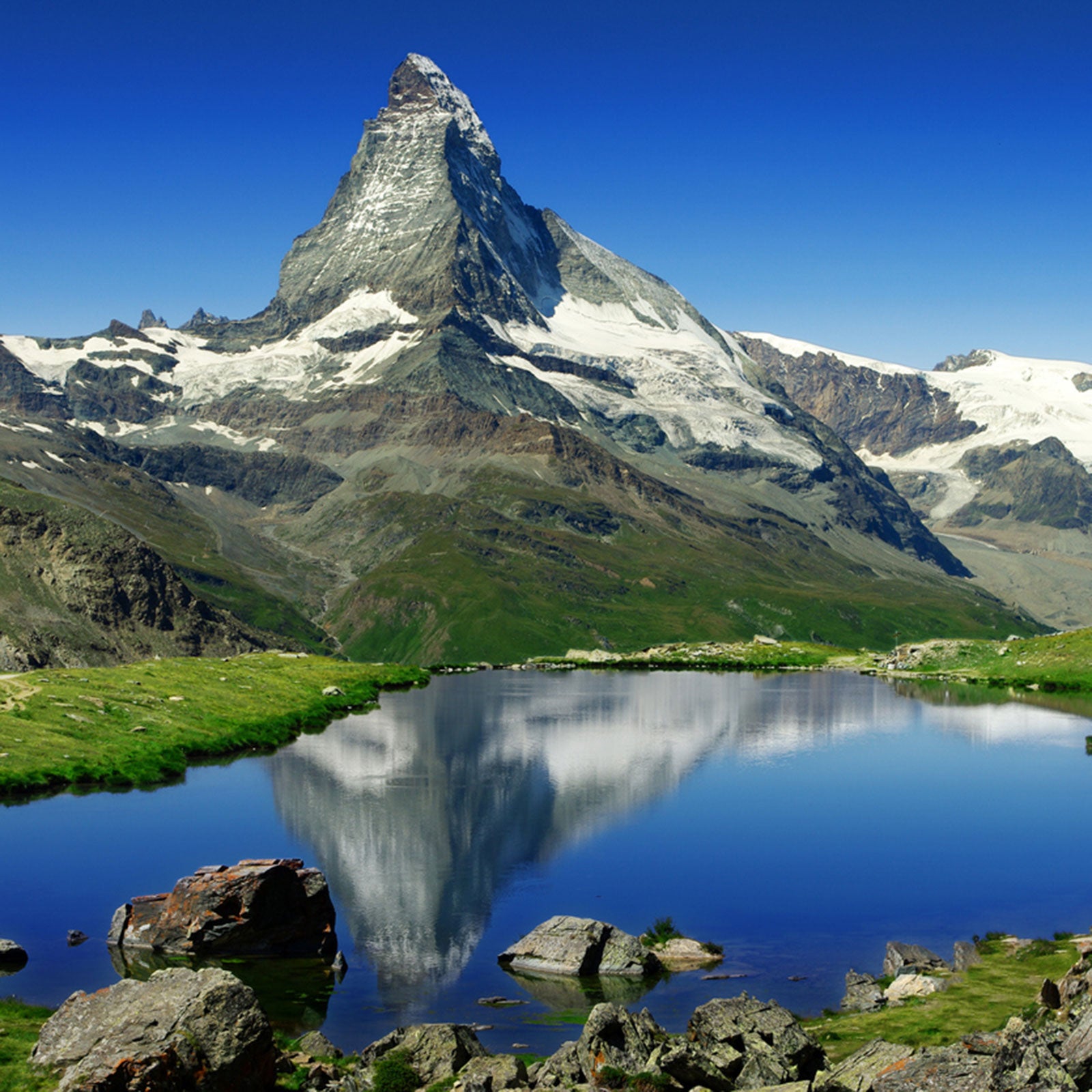Should the Matterhorn close? That question arose again last week after at least one anonymous guide told the Swiss newspaper����that the mountain was too unstable and therefore too dangerous to climb.��
The comment came after a South Korean climber and his guide died last month after a rock fell and damaged a fixed rope on the east flank of the mountain. A total of six��people have died on the Matterhorn so far this year, and 11 died attempting to reach its��summit last season. The 14,642-foot peak has always been one of the world’s most dangerous; it’s estimated that more than 500 people have died since it was first summited in 1865.��
“The Matterhorn is not a piece of solid granite.��It’s a piece of shales [soft, stratified sedimentary rock]. It’s not very stable,” says Raphael Mayoraz, a geologist, mountain guide, and head of the natural-hazards department of��the Swiss canton��of Valais, where the mountain is located.�� by the PermaSense��project released in 2019 found that melting permafrost and receding glaciers have made rockfalls��an even greater danger on hot summer days.
Mayoraz says he’s��noticed changes in the Alps since his early days as a mountain guide. The north faces of the range used to be perpetually covered in snow, meaning climbs were on hard, packed snow and ice. But much of that “has been melting, which means now most north faces are pure rock, and they are less stable,” he says.��
In winter, snow fills the gaps between loose, unstable rock on the upper layers of the Alps. That snow turns to ice at freezing altitudes, which acts as a glue, keeping the rocks in place. A colder, snowier��winter will create more ice, while extremely hot summers melt it, causing an increased risk of rockfall.��Because of this phenomenon, the north face of the Matterhorn has become almost too dangerous to climb in the summer, according to Mayoraz. This includes Hörnligrat Ridge, on the northeast face, the most popular��route to the summit.
Rockfall happens, says Jonathon Spitzer, director of field operations at , who monitors the conditions on the Matterhorn daily. “It’s more prevalent in the Alps than anywhere else in the world that we guide, just because the permafrost there is melting drastically with climate change,” Spitzer explains.��
Mayoraz says that people climb the mountain at their own risk.
The mountain closed for several days ��after a major heat wave resulted in��35,000 cubic feet of rock sliding��off��the Hörnligrat Ridge, forcing��the evacuation of 90 climbers. This led��scientists from to install wireless sensors where the rockfall occurred.
But the notion that the Matterhorn should close now doesn’t make sense, according to��Mayoraz. It��would be impossible to keep climbers off it anyway.��“It’s a big mountain. There are probably 20 routes that go to the top of Matterhorn, or even more, so what are you going to do?”��
“Glaciers are receding very quickly,” says Mayoraz. Two-thirds of the glaciers in the Alps will be lost by 2100, according to published in the geosciences journal��The Cryosphere��in April. “There are new crevasses. You need to find new routes to go on the glacier. It’s a continued adaptation, but that’s part of alpinism: finding the best way, the safest way.”
There are no plans to close the Matterhorn this year. “No one, and even less the mountain guides, are in favor of a closure,” says Pierre Mathey. managing director of the Swiss Mountain Guide Association.��And Alpine Ascents has no plans to halt its��guided trips, says Spitzer. It has��four more groups attempting the summit this year. “We tell them up front that we need to be aware that rockfall is prevalent,” says Spitzer.��
Mayoraz says that people climb the mountain at their own risk. Whether to ascend a mountain is a decision, he believes, that local authorities should have no role in making for individual climbers. “Where is the limit? When do you open and��when do you close��a, by the way, pretty shaky mountain?”


